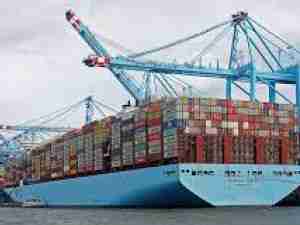Key insights:
- The Golden Week holiday and the lower manufacturing output in the region due to the recent power restrictions may have contributed to significant improvement in the backlog of ships in Shanghai. And with end-to-end deliveries through the snarled supply chain often taking longer than the ten weeks left before Christmas, it is likely peak season demand is also on the wane.
- Despite moderate increases this week, Asia-US West Coast container rates are still 16% below their September peak, reflecting the drop in demand. But the improvement in Shanghai could still mean new surges of vessels arriving at congested destinations. And despite the dip in rates, congestion and demand are expected to keep delays and elevated rates a reality not only through the end of this year but possibly through the end of 2022 as well.
Asia-US rates:
- Asia-US West Coast prices (FBX01 Daily) increased 4% to $17,377/FEU. This rate is 349% higher than the same time last year.
- Asia-US East Coast prices (FBX03 Daily) increased 7% to $20,695/FEU, and are 342% higher than rates for this week last year.
Analysis
While Typhoon Kompasu complicates operations in Southern Chinese ports, the backlog of more than 150 ships causing delays out of Shanghai and Ningbo has been cut in half over the last couple weeks.
The Golden Week holiday and the lower manufacturing output in the region due to the recent power restrictions could have provided some respite to start clearing the backlog. And with end-to-end deliveries through the snarled supply chain often taking longer than the ten weeks left before Christmas, it is likely peak season demand is also on the wane.
Though Asia-US West Coast container rates climbed 4% since last week, they are still 16% below their September peak, reflecting the drop in demand. But the improvement of conditions in Shanghai or a restoration of electricity and production could still mean new surges of vessels arriving at congested ports like LA/Long Beach, shifting the backlog to the destination ports.
The Biden administration announced new measures to extend the hours that trucks can access the ports of LA and Long Beach in hopes of clearing the backlog and its knock-on effects on the economy. But with a significant share of current trucking slots already going unused – and with few takers for the extra hours of a recent 24/7 pilot at Long Beach – the move will require the coordination not just of trucks, but of warehouses, container yards, retailers and other players to have a significant impact.
And the National Retail Federation projects that October US retail ocean imports were down only slightly from September, and expects volumes to dip only 3% by December – meaning that during the typical December “lull” volumes will be 20% higher than in 2019.
So while importers will gladly take the dip in rates after nearly a year and a half of increases, sustained congestion and demand are expected to keep delays and elevated rates a reality, possibly into 2023.










